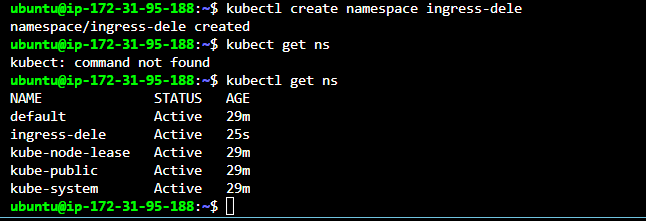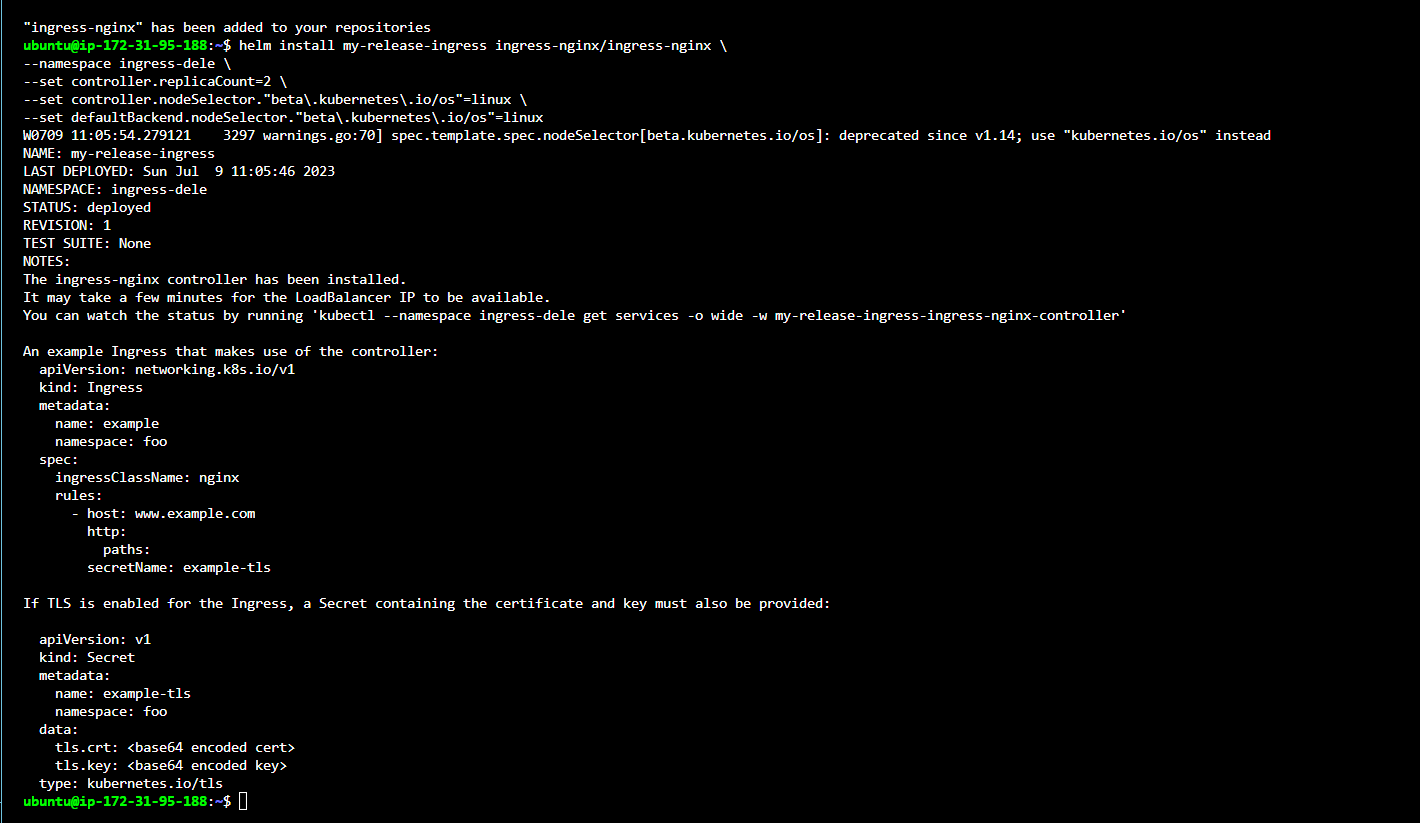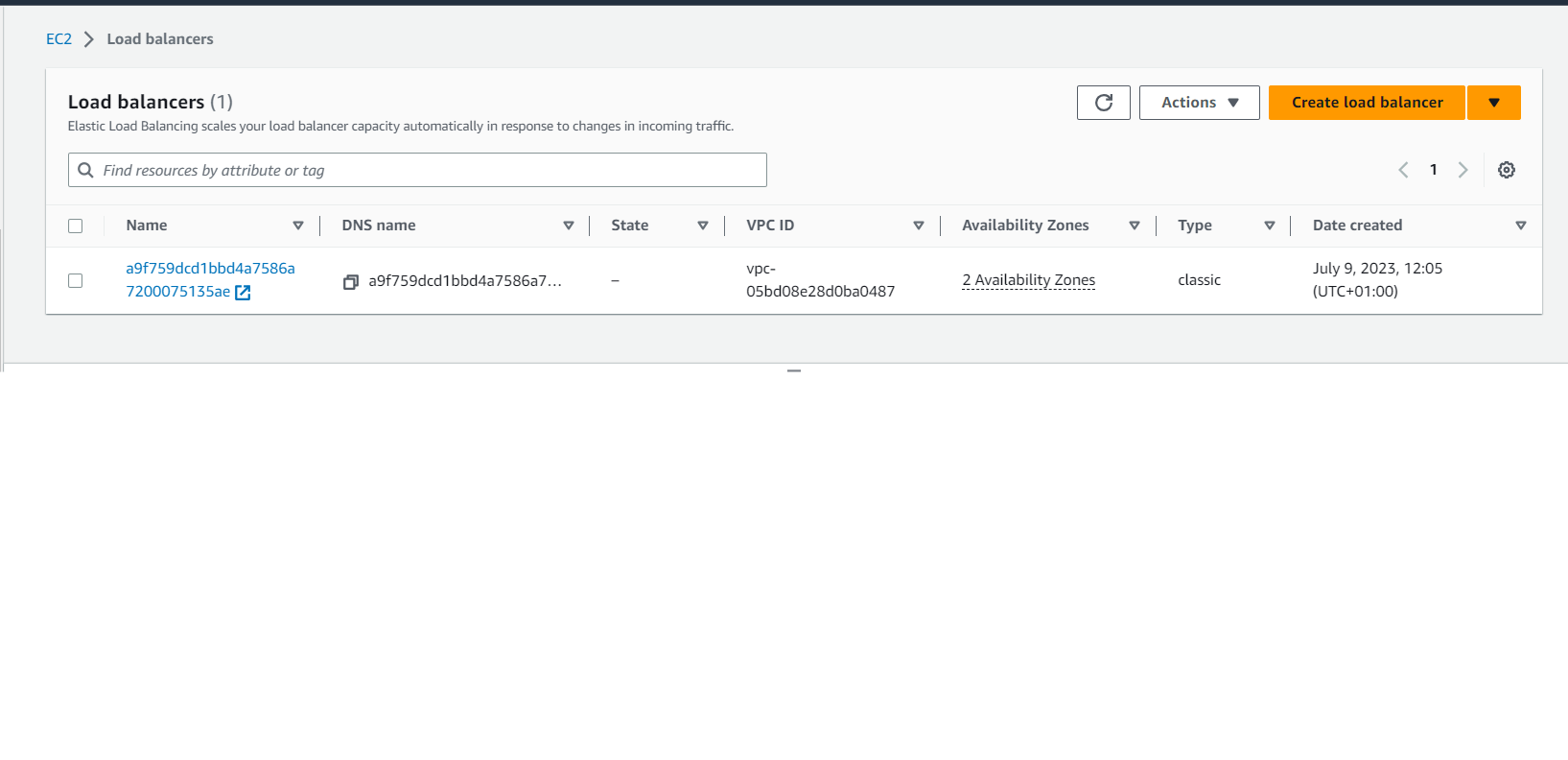Create an EC2 Instance to act as our cloent machine
Type: t2.medium AMI: Ubuntu 22.04
SSH into the instance and install; AWSCLI,Kubectl and eksctl
INSTALL AWS CLI
curl "https://awscli.amazonaws.com/awscli-exe-linux-x86_64.zip" -o "awscliv2.zip"
sudo apt install unzip
sudo unzip awscliv2.zip
sudo ./aws/install
aws --version
INSTALL EKSCTL
curl --silent --location "https://github.com/weaveworks/eksctl/releases/latest/download/eksctl_$(uname -s)_amd64.tar.gz" | tar xz -C /tmp
sudo mv /tmp/eksctl /usr/local/bin
eksctl version
INSTALL KUBECTL
curl -s https://packages.cloud.google.com/apt/doc/apt-key.gpg | sudo apt-key add -
sudo touch /etc/apt/sources.list.d/kubernetes.list
echo "deb http://apt.kubernetes.io/ kubernetes-xenial main" | sudo tee -a /etc/apt/sources.list.d/kubernetes.list
sudo apt-get update
sudo apt-get install -y kubectl
LETS GIVE THE EC2 INSTA=NCE PRIVILEGES TO CREATE SERVICES ON OUR BEHALF FOR THIS DEMO , I WILL GIVE FULL ADMIN ACCESS. GIVE LEAST PRIVILEGE IN PRODUCTION
We need to create Create IAM Role with Administrator Access
-
Create an IAM role with AdministratorAccess policy.
-
Go to AWS console > IAM > Roles. create a role
-
Select AWS services, Click EC2, Click on Next permissions. AdministratorAccess policy and select
-
Name your role and create it Next, we need to assign the created role to our EC2 instance
-
Go to AWS console > EC2 > EC2 instance > Security
-
Click on Modify IAM Role
-
Choose the role we created from the dropdown and click on Apply.
Our Instance can now request services on our behalf
LETS CREATE THE EKS CLUSTER WITH 2 WORKER NODES USING EKSCTL
eksctl create cluster --name demo-eks --region us-east-1 --nodegroup-name my-nodes --node-type t3.small --managed --nodes 2
CHECK TO SEE IF OUR CLUSTER IS READY
kubectl get nodes
We shall be using helm to deploy our Nginx ingress controller.
INSTALL HELM
sudo apt update
curl -fsSL -o get_helm.sh https://raw.githubusercontent.com/helm/helm/master/scripts/get-helm-3
chmod +x get_helm.sh
sudo ./get_helm.sh
Check installation
helm version
Before we install ingress, let's create a namespace for this
kubectl create namespace ingress-dele
Let's install the Nginx Ingree Controller using helm
helm repo add ingress-nginx https://kubernetes.github.io/ingress-nginx
helm install my-release-ingress ingress-nginx/ingress-nginx \
--namespace ingress-dele \
--set controller.replicaCount=2 \
--set controller.nodeSelector."beta\.kubernetes\.io/os"=linux \
--set defaultBackend.nodeSelector."beta\.kubernetes\.io/os"=linux
Verify if release installed
helm ls --namespace ingress-dele
Next, let's check what resources are now in our namespace
kubectl get all --namespace ingress-dele
It has created 2 nginx cingress controller pods, a replicaset of 2 pods and 2 services The first service is of type LoadBalancer
The second service is of type clusterIP
We can view the created LoadBalancer in our AWS Console EC2 > Load Balancers
Next, I will create 2 pods in ingress-dele namespace (apple and banana), each with it's own service
Here is our apple mnifest file apple.yaml
apiVersion: v1
kind: Pod
metadata:
name: apple-app
labels:
apps: apple
spec:
containers:
- name: apple-app
image: hashicorp/http-echo
args:
- "-text=apple"
---
apiVersion: v1
kind: Service
metadata:
name: apple-service
spec:
selector:
app: apple
ports:
- port: 5678
Here is the manifest file for banana.yaml
apiVersion: v1
kind: Pod
metadata:
name: banana-app
labels:
apps: banana
spec:
containers:
- name: banana-app
image: hashicorp/http-echo
args:
- "-text=banana"
---
apiVersion: v1
kind: Service
metadata:
name: banana-service
spec:
selector:
app: banana
ports:
- port: 5678
kubectl create -f https://raw.githubusercontent.com/deleonab/ingress-controller-aws-eks/main/EKS-Ingress-Controller/banana.yaml -n ingress-dele
Now we have 4 pods running. 2 ingress controller pods 2 applications ( banana-app and apple-app)
We should also have 4 services running
kubectl get svc -n ingress-dele
Now we shall deploy our ingress resource
Our ingress resource manifest file is example-ingress.yaml
apiVersion: networking.k8s.io/v1
kind: Ingress
metadata:
name: example-ingress
annotations:
kubernetes.io/ingress.class: nginx
spec:
rules:
- host: a9f759dcd1bbd4a7586a7200075135ae-518961434.us-east-1.elb.amazonaws.com
http:
paths:
- path: /apple
pathType: Prefix
backend:
service:
name: apple-service
port:
number: 5678
- path: /banana
pathType: Prefix
backend:
service:
name: banana-service
port:
number: 5678
ubuntu@ip-172-31-95-188:~$ kubectl create -f https://raw.githubusercontent.com/deleonab/ingress-controller-aws-eks/main/EKS-Ingress-Controller/example-ingress.yaml -n ingress-dele
ingress.networking.k8s.io/example-ingress created
ubuntu@ip-172-31-95-188:~$ kubectl get all -n ingress-dele
NAME READY STATUS RESTARTS AGE
pod/apple-app 1/1 Running 0 123m
pod/banana-app 1/1 Running 0 121m
pod/my-release-ingress-ingress-nginx-controller-55cf8588b4-ncctk 1/1 Running 0 4h18m
pod/my-release-ingress-ingress-nginx-controller-55cf8588b4-rrwxv 1/1 Running 0 4h18m
NAME TYPE CLUSTER-IP EXTERNAL-IP PORT(S) AGE
service/apple-service ClusterIP 10.100.136.211 <none> 5678/TCP
NAME READY UP-TO-DATE AVAILABLE AGE
deployment.apps/my-release-ingress-ingress-nginx-controller 2/2 2 2 4h18m
NAME DESIRED CURRENT READY AGE
replicaset.apps/my-release-ingress-ingress-nginx-controller-55cf8588b4 2 2 2 4h18m
ubuntu@ip-172-31-95-188:~$ sudo systemctl config nginx
Unknown command verb config.
ubuntu@ip-172-31-95-188:~$ service nginx status
Unit nginx.service could not be found.
ubuntu@ip-172-31-95-188:~$ kubectl get ingress -n ingress-dele
NAME CLASS HOSTS ADDRESS PORTS AGE
example-ingress <none> a9f759dcd1bbd4a7586a7200075135ae-518961434.us-east-1.elb.amazonaws.com a9f759dcd1bbd4a7586a7200075135ae-518961434.us-east-1.elb.amazonaws.com 80 11m
You can now view your load balancer in action by typing the different paths
a9f759dcd1bbd4a7586a7200075135ae-518961434.us-east-1.elb.amazonaws.com/apple
a9f759dcd1bbd4a7586a7200075135ae-518961434.us-east-1.elb.amazonaws.com/banana













